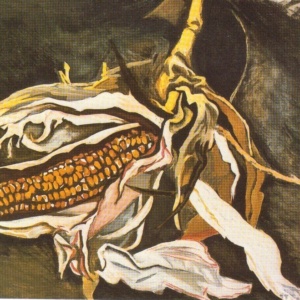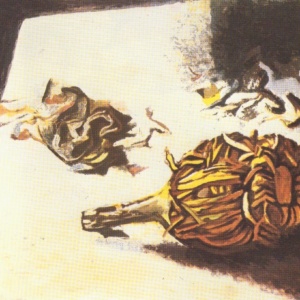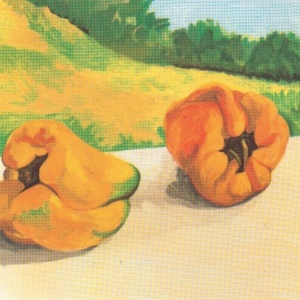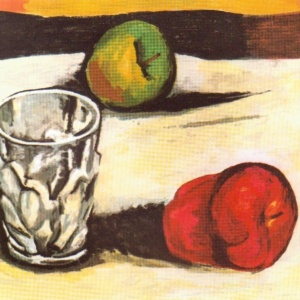Renato Guttuso
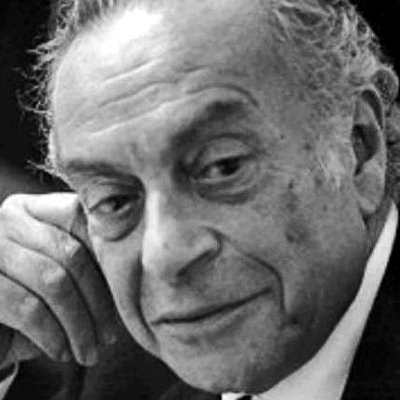
ART PRINTS
ARTISTS
Renato Guttuso was born in 1911 in Bagheria, the town that provided him with an extraordinary repertoire of images and colours throughout his life. In 1924, when he was only thirteen years old, he began to sign and date his works, mostly small paintings on wood which were copies of nineteenth-century Sicilian landscape painters. In the following years, he began to visit the studio of Futurist painter Pippo Rizzo and became involved in the local art scene.
He held his first group exhibition in Palermo in 1928 and in 1931 he exhibited at the Rome Quadrennial, where he also had the chance to see the work of the greatest Italian artists of the time. The following year, he took part in a group exhibition along with other Sicilian painters at the Galleria del Milione in Milan. After settling in Rome, he met Mario Mafai, Francesco Trombadori, Corrado Cagli, Pericle Fazzini, and Mirko and Afro Basaldella. In 1935, he moved to Milan to serve out his military service. There, he became friends with artists Renato Birolli, Aligi Sassu, Giacomo Manzù and Lucio Fontana, and intellectuals Salvatore Quasimodo, Raffaele de Grada, Elio Vittorini, Antonio Banfi, Raffaele Carrieri and Edoardo Persico among others. Despite these friendships, which were crucial to his political and cultural experiences in the group Gruppo di Corrente, he suffered from severe depression in this Milan period – as evidenced by the poems written in those years – probably caused, amongst other things, by financial difficulties. In 1937, he moved back to Rome. He would be based there for most of his life, his studio becoming one of the most lively and interesting cultural and intellectual focal points in the city. Many of his extraordinary still lifes were created in these years, as well as Fucilazione in campagna (Country Shooting) – dedicated to Federico Garcia Lorca – and Fuga dall’Etna (Escape from Etna), which earned him the prestigious Bergamo Prize. In the same period, he met Mimise Dotti, who would become his lifelong companion. In the early 1940s, he painted Crocefissione (Crucifixion), his most famous work and one of the most significant paintings of the twentieth century. Later, he left Rome for political reasons and actively took part in the anti-Fascist resistance, an experience which resulted in Gott mitt Uns, a series of drawings that he made with the ink used by the underground press. After the war, he met Pablo Picasso in Paris and, together with Renato Birolli, Emilio Vedova, and Giuseppe Marchiori, he founded the Fronte Nuovo delle Arti (New Arts Front), a political artistic movement intent on the rediscovery of European artistic experiences that had been censored during the twenty years of Fascism in Italy.
In addition to his work as a painter and art critic, Guttuso worked on the set designs of important stage productions, among which Dmitri Shostakovich’s Lady Macbeth of Mtsensk, Bertolt Brecht’s Mother Courage and Her Children and Eduardo de Filippo’s The Contract. Among the most important awards he received were the World Peace Council Prize in Warsaw (1950), and the Lenin Prize in Moscow (1972). His artwork was exhibited at numerous editions of the Venice Biennale and at many museums and venues worldwide, These included the Pushkin State Museum of Fine Arts in Moscow, the Stedelijk Museum in Amsterdam, the Palais des Beaux–Arts in Charleroi (all in the early 1960s), the Royal Palace of Palermo, the Museum of Modern Art of Paris, and the Academy of Fine Arts in Moscow (in the 1970s) and Palazzo Grassi in Venice (in the 1980s). From 1973, Guttuso donated a large number of his works to his hometown, Bagheria. After his death in 1987, the town dedicated the Civic Museum to his memory, and it still contains the largest collection of his work. Guttuso’s artwork attracted the interest of internationally renowned critics and intellectuals, and his works are to be found in major public and private collections worldwide.



